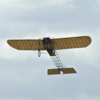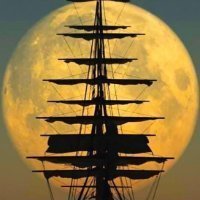Search the Community
Showing results for tags 'Wooden kit'.
-
With my shallop approaching completion, I'm starting a new wooden vessel. This is Vanguard Models's HM Armed Cutter Sherbourne – 1763. Sir Thomas Slade's most notable design was HMS Victory. Victory was laid down some four years before Sherbourne, though commissioned over a decade after. The box And content The figures and pin pusher are extras that I bought. Strip Wood The dark wood at the bottom is pear, the pale stuff in the middle is lime (or bass wood), and the dowels are (I think) walnut. The sheet wood: Shown here with the acrylic display stand. In addition to the book, the kit came with 19 sheets of drawings And, those figures I'll take a view on how I use these guys; as presented, they are more appropriate to Trafalgar and the Napoleonic period than to the 1760s. Side note: This Vanguard kit is Chris Watton's second Sherbourne in this scale. The other is still available; this version benefits from additional research and learning.
- 4 replies
-
- 7
-

-
- Wooden kit
- Vanguard Models
-
(and 1 more)
Tagged with:
-
The decision is made. My next maritime project will be the 1/100 kit of L'Orenoque (1843) first made by the Italian company Mamoli in 1978, though mine is a newer edition, exact date unknown. The kit was designed by Luigi Volunte. [I'll need an abbreviation for that name so how about L'O?] I chose her from my stash of ten unstarted kits for many reasons: I wanted a different and harder rig to the cutters that I've been doing lately. The hull is nicely pointed so there's no bluff bow to make the planking onerous to me. There are no sails, no visible guns. The deck with the beautiful and complex deckhouses is an area of building that I enjoy very much and want to practice with. I'm new to Mamoli kits and they have a big range so I hope that I like them. L'O is much later than almost anything else in the stash and typical of that awkward period when sail began to give way to steam power so there's lots of history to explore; periods of change are usually more interesting than the stable years. There are paddlewheels and a chimney funnel. By the most remarkable coincidence, there's a whaling connection! (My last project to be finished was a whaleboat.) And most importantly, this one whispered in my ear as I opened the stash cupboard. “Buildez-moi, Monsieur!” I'm currently on holiday from kit building until Christmas day when I'm Blitzbuilding an aeroplane of all things, but at least it will have rigging. I plan to start L'O on Boxing Day, making it her official unboxing day, but I have peeped inside tonight and I'm very excited by what I found there.
- 200 replies
-
- 13
-

-
This is a kit that I started almost a year ago in the Salty Sea Dog GB but was unable to finish. I restarted in the KUTA GB and as you see, completed it this time, making it my third completed wooden model vessel. There's an awful lot wrong with it but that doesn't matter because there's also quite a few things that went well enough for me to be very pleased with the result. I'll caption the photographs for anyone who hasn't followed the build or who might want to know a little more about whaleboats like this. They were the hunting boats carried by the sailing whalers from the eighteenth century until about 1880. This one is based on an 1860 example preserved in America. It had a crew of six. In the bow and taking the number one oar is the man who throws the harpoons. He is confusingly known as the boat-steerer. Working aft, the next four crewmen are simply rowers and the man at the stern, with the steering oar, is the officer in charge of the boat with the rank of mate. Once the harpoons are placed securely in the whale, the mate and the boat-steerer changed ends and the boat-steerer steered the boat under the orders of the mate. That changeover must have been a tense moment. Edit, January 29 2024: I found these two figures are the correct scale for the boat so now we know how big t was, something I'd never really understood myself. And now back to the story. The boats were built for speed. The planking was only half an inch thick, though some structural members were massive to accept to loads applied by a running whale. They were not comfortable craft but were very manoeuvrable. The defining feature of a whaleboat is the double endedness. Sharp at both ends, they were capable of getting away from trouble with the whales as fast as they got into it. And hunting whales from boats like this in the open sea is just asking for trouble. Many whaleboats were smashed by the whales, particularly the carnivorous ones, the sperm whales, and many whalermen died on the job. Back to the kit, and starting from the bottom, the stand didn't come from the kit. The base is a guitar head veneer in Santos rosewood supplied by The Exotic Wood Company. The plinth is a lamination of rosewood and maple, a failed woodwork project which was given to me by my son. I shaped it to echo the lines of the boat which is glued into a shallow groove in the top. Fortunately the whaleboat has almost no keel, a feature which aids manoeuvrability and makes it conveniently easy to mount. Note that the clinker built planks aren't evenly spaced. That's one of my many screw ups. The ones low down are even worse but harder to see, thank goodness. At the prow we find the sharp ends of TWO harpoons. They were both attached to one line and it was the boat-steerer's job to plant both of them into the whale before it got up to speed. He had little time to do this and if he missed with one of them it would become a dangerous missile trailing in the wake of the whale. The need for speed is the reason for that harpoon rack which is the 'quick draw rig' of the trade. It was said that a good boat-steerer would have the second harpoon in his hand, if not in the air, before the first one landed. They were not hurled overarm like javelins but supported by the left hand were pushed into the air by the right hand on the butt of the shaft into a parabolic flight not unlike a caber toss. It was the weight of the heavy wood that drove the barbed point into the whale. The massive timber with the big groove cut into it is the 'clumsy cleat'. The groove, lined with leather, was filled by the boat-steerer's left leg to keep him on his feet. It's so massive because together with the two timbers running forward along the top of the bow it supports the sheave in the extreme bow where the line runs out. It's where the lateral and vertical pulls of the whale are transferred to the boat. The thick rope was for the mate to hold onto when the whale was towing the boat fast in the 'Nantucket Sleighride'. Also in this photo you can see the mast and boom wrapped in their sail. Whaleboats don't sail well due to the lack of a keel but with a following wind it would make a pleasant change from rowing for six to ten hours after the prey. One of the most difficult things in this build was getting that cord to lie like rope. I applied beeswax to it to kill the springiness and then when it was more or less in the right place, soaked it in shellac from a brush to make it lie down as if heavy. I can see that technique being useful on armour models. Looking back from the bow you can see the six oars carried. Five were for rowing and the longest one was a steering oar. Between the lashed oars and the side of the boat are a substantial boathook and a 'spade'. The spade is a carving knife on a stick used for cutting a hole through the flukes of a dead whale so that a tow rope could be attached when it was necessary to tow the whale back to the mother ship. On the starboard side is the lance, an unbarbed and extra long harpoon like tool used by the mate to despatch the whale once it was exhausted by towing the boat, often for miles. The lance could be driven deep into the whale 'searching for its life' and then withdrawn for further attempts. It was brutal stuff and I have a lot of sympathy for the whales. The second thwart holds the clamp for the mast which is stepped into the keel of the boat directly below. The small barrel is the crew's drinking water. No food was carried on the hunt. Finally for this picture, you see the two tubs of line. I believe that added up to half a mile of line. The smaller one was held in reserve and only tied onto the end of the first section if it seemed likely that the particular whale would go deep. ~~~~~~~~~~~~~~~~~~ I'm sorry but it's getting rather late now, so I must end here and continue in the morning. Edit: The story continues four posts down.


